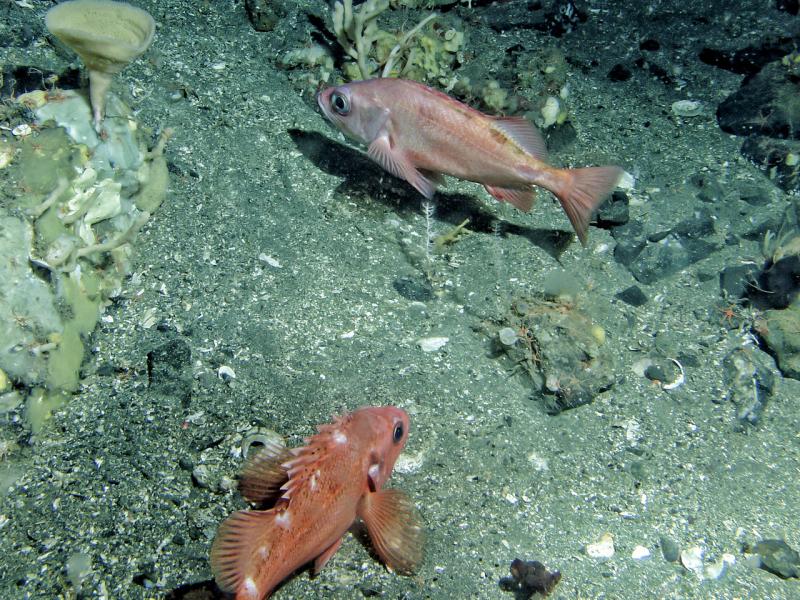NOAA scientists and partners have released a 2019 Climate Vulnerability Assessment for groundfish, crabs, and salmon in the Eastern Bering Sea. They looked at the potential impacts of changing climate, ocean temperatures, and other environmental conditions on 36 groundfish, crab and salmon stocks. Of these, four rockfish stocks, flathead sole and Tanner crab were determined to be the most vulnerable. Several other fish stocks were seen as potentially more resilient. This is because they may be able to move to areas with more favorable environmental conditions, such as more food and optimum water temperatures for growth and survival.
“Alaska fisheries are really important—they contributed 58% of U.S. landings and 29% of U.S. ex-vessel value in 2016, with the majority of Alaska landings and value obtained from the Eastern Bering Sea shelf,” said Robert Foy, director, Alaska Fisheries Science Center. “In the past few years water temperatures have been much warmer than average making the need for studies like this all the more imperative. Our science both in the field and in the lab is critical to monitor ecosystem changes and provide short-term and long-term forecasts to help commercial, recreational and subsistence communities anticipate and respond to changes that impact their way of life.”
Thirty-four scientists assisted with this stock analysis. They considered the likelihood of exposure to climate change, and the sensitivity and adaptability if exposed.
Researchers used existing information on climate and ocean conditions, species distributions, and species growth and development. They estimated each stock’s overall vulnerability to climate-related changes in the region.
For evaluated stocks, the exposure risk to climate change ranged from low to moderate.
The most vulnerable Eastern Bering Sea stocks were:
- Pacific ocean perch.
- Rougheye rockfish.
- Shortraker rockfish.
- Shortspine thornyhead.
- Flathead sole.
- Tanner crab.
These stocks, and Kamchatka flounder, sablefish, giant grenadier and salmon shark, had moderate exposure to climate change.
“Our models projected more variability in salinity and water temperatures in the offshore ocean habitats where all of these species tend to be found, making them more vulnerable than other species which inhabit different areas,” said Paul Spencer, fisheries biologist and lead author of this study.
The scientific team classified nine flatfish stocks, crab, forage fish, rockfish, sablefish, Giant Pacific octopus, sculpins, Pacific cod and walleye “Alaska” pollock as having lower vulnerability due to their mobility.
However, additional research conducted by Alaska Fisheries Science Center scientists suggests that the story for Alaska pollock, and Pacific cod, and possibly other species is more nuanced. Field and laboratory studies on Pacific cod have shown that warmer water temperatures and lower pH levels (i.e., ocean acidification) can affect prey availability. It also affects Pacific cod egg, larvae, and juvenile development—which ultimately affects Pacific cod survival.
Fewer young fish mean fewer adult fish, and fewer fish for fishermen to catch—so there could be delayed impacts of changing climate and ocean conditions on this species.
Additional research is ongoing to better understand the implications of changing climate and ocean conditions across the various stages of development of fish and crab stocks.
Bering Sea Stock Sensitivity If Exposed to Climate Change
Scientists ranked rockfish, crab, and five of the nine flatfish stocks as having high sensitivity. This is due to low population growth rates, limited spawning cycles, and (for crab) sensitivity to ocean acidification.
Salmon also ranked high due to their limited spawning cycle, complex reproductive strategy, and limited dispersal of early life stages.
In contrast, sharks were determined to be the least sensitive to climate change. Sharks are highly vulnerable to overfishing because they produce low numbers of offspring. However, their unique life history of not having a larval stage and baring actively swimming small sharks that are opportunistic feeders may provide an advantage to coping with climate change. Another factor may be the prehistoric nature of shark species, which have survived historic climate shifts.
“These assessments, together with sophisticated regional models that include a variety of ecosystem and climate information are valuable tools for helping us better understand, anticipate and respond to current and projected changes in the marine environment,” said Roger Griffis, NOAA Fisheries Climate Coordinator.
This is the third in a series of climate vulnerability assessments underway for fishery species in other U.S. regions. Conducting climate change vulnerability assessments of U.S. fisheries is a priority action in the NOAA Fisheries Climate Science Strategy.

